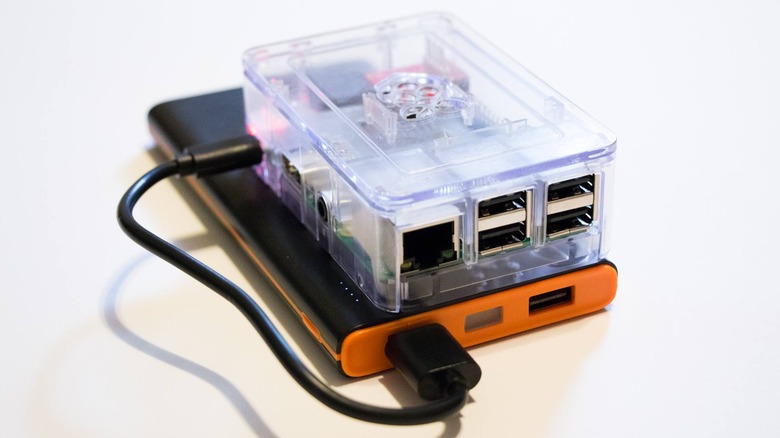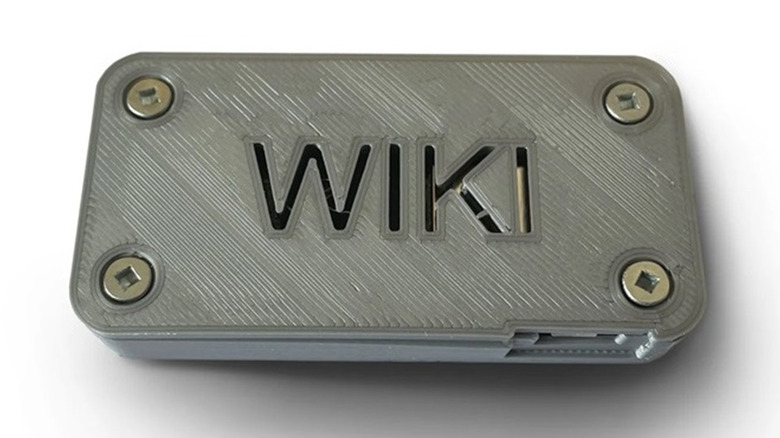This Device Can Replace Google When You Need Information Without An Internet Connection
In just a few decades, the internet has gone from a fascinating curiosity to a critical part of our daily lives; so much so that we often take our access to it for granted. However, while most people can hook into the live internet from various sources in multiple locations, this isn't the case for everyone. According to the World Economic Forum, in 2024 there were 2.6 billion people on the other side of the "digital divide" in economic or geographic circumstances that prevented access to the internet.
One global initiative that helps bring internet access to more people is Internet-in-a-Box (IIAB). While the system doesn't provide live internet access or Google search results, it can locally store up to a terabyte of customizable web content along with other data. Each IIAB can be configured according to its intended use. For example, a medical clinic in a remote village could load its IIAB with resources for providers and patients, while a school in the same village could fill it with information relevant to its curricula.
IIAB is a free open-source software system that runs on many of the easiest to use Linux distributions including Ubuntu, Debian, and Raspberry Pi OS. As for hardware it runs quite happily on older PCs and Macs, and it can be installed on a Raspberry PI minicomputer if power consumption is an issue. The system has been put to use in rural townships in South Africa, orphanages and schools in Haiti, a girls' science school in Rwanda, and many other locations. It can't replicate the full online experience, but it's an important step in helping democratize access to information.
How the internet works without the internet
Internet in a Box has offered exactly what the name suggests since 2013. While there are pros and cons of open source software, the IIAB free open-source package has the backing of Wiki Project Med, a charitable arm of the Wikimedia Foundation. You can visit the IIAB website for guides and download links, and once it's installed and configured you can load your own information or one of the many content packs available. All you need is some basic hardware to act as the local server to store copies of websites, educational resources, Google or Apple Maps data for your region, and more. Depending on what you're using for a server a wi-fi router may be required to enable it as a data hotspot, but that's pretty much it. End users access an IIAB's data through a customizable home page.
Content packs suitable for many communities are available from the IIAB website or sources like archive.org and worldpossible.org. Among the types of content packs available are medical resources, Khan Academy courses, TED talks, open-source software libraries, and YouTube channels. If you have the time and patience it's entirely possible to build your own content library from scratch, and supplemental data can be piggybacked onto any IIAB using an external storage device. Even if you don't need a device of your own, you can still add photos or other information to the foundation's knowledge base to help others. For the billions of people without regular access, Internet in a Box represents a simple, low-cost workaround that opens up a world of knowledge and the possibilities that come with it. You can even purchase ready-to-load IIAB devices from Wiki Project Med or the Wikipedia store, although it's sold out via the latter as of this writing.

